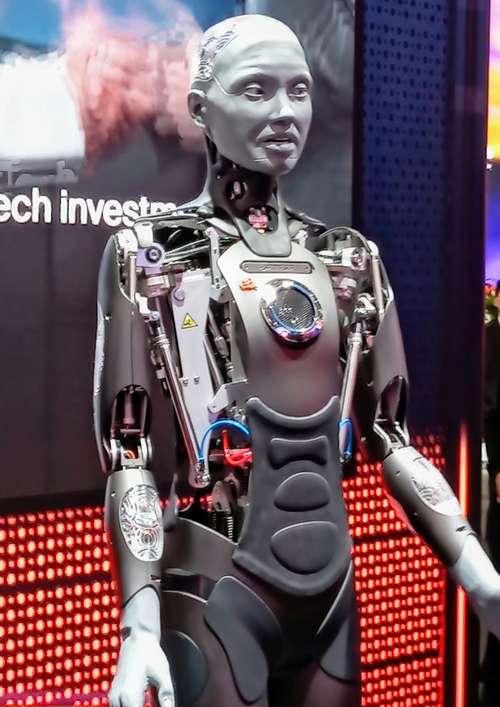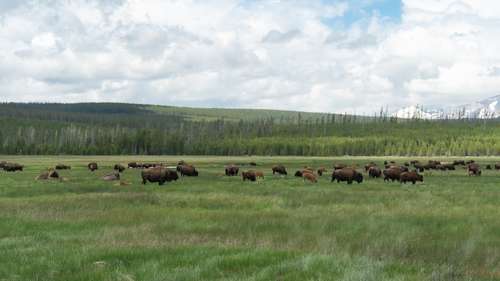Science has been on a quest to understand the language of animals for a long time. From deciphering bird songs to decoding whale communication, biologists and researchers have immersed themselves in detailed observation and experimentation to tackle this challenging task. However, there is a promising hope that has emerged in the form of Artificial Intelligence (AI).
The use of innovative technology, particularly machine learning, shows great potential in helping us decode and track animal communication more quickly. It's fascinating how quickly artificial intelligence has become mainstream.
ChatGPT was one of the pioneers of AI, becoming very popular worldwide. Since then, reports have surfaced of other companies, such as Google, Microsoft, and Amazon, developing their own AI solutions.
Now, there are already reports that there's a little chance that humans might learn to communicate directly with animals. Of course, artificial intelligence will help humans reach this milestone.
The Power of AI in Pattern Detection
Machine learning algorithms are at the heart of this transformation. These algorithms serve as formidable pattern detectors and content generators.
They are designed not just for processing human language, as demonstrated by interactive chatbots, but also for identifying and classifying signals from animals based on audio and video recordings.

Many machine learning methods require a large amount of data to achieve faster speeds. For example, a well-known language model called Chat GPT-3 was trained using hundreds of billions of 'tokens', which is similar to words, and is equivalent to over two million books the length of Charles Darwin's "On the Origin of Species."
This highlights the importance of developing new and innovative methods for collecting data on wild animals, a challenge that researchers are currently working on.
Projects Paving the Way for AI in Animal Communication
Several research initiatives are leading the charge in integrating AI into the realm of animal communication. Project CETI (Cetacean Translation Initiative), for instance, focuses on unraveling the communicative behavior of sperm whales.
Their approach is multi-faceted, utilizing bio-inspired whale-mounted tags, underwater robots, and other methods to map the rich tapestry of these animals' communicative behavior.
Another notable project is the Earth Species Project (ESP), co-founded by Aza Raskin and Katherine Zacarian. ESP is dedicated to studying the communication systems of various animal species.
Their vision extends beyond decoding animal conversations; it aims to take advantage of this knowledge to enhance animal welfare in captivity and design more effective conservation strategies. Ultimately, these initiatives aim to foster greater respect for the diverse species with which we share our planet.
A Glimpse into the Future: 'Listening In' on Animal Conversations
The prospects of AI in animal communication are nothing short of exciting. It holds the potential not only to decode ongoing conversations but to archive them for future reference.
For instance, AI could enable detailed comparisons of communication between the last surviving individuals, such as those held in conservation breeding centers. This archival approach may even pave the way for cultural restoration, a beautiful prospect indeed.
Professor Christian Rutz from the University of St Andrews envisions passive acoustic monitoring systems that could gauge the emotional states of animals at a landscape level. Understanding communication signals associated with distress or avoidance could provide vital insights into the well-being of animals in their natural habitats.
In the journey to decode animal communication, it's essential to acknowledge the complexity and diversity of these systems. The challenge is significant, and context plays an important role in understanding the meaning of signals. While AI is a powerful tool, it is just one piece of the puzzle. It completes our efforts in decoding the rich languages of the animal kingdom.
AI is playing an increasingly important role in our endeavor to understand and translate animal communication. Through machine learning and natural language processing, we are beginning to decode the detailed signals that animals use to communicate.
This technology is opening new doors to inter-species understanding and the development of more effective conservation strategies.
As we continue to refine these technologies and deepen our comprehension of animal communication, we inch closer to the day when we can truly converse with the animals that share our planet.
In animal communication, where humans have often been passive observers, AI has the potential to transform us into active participants in the conversations of the natural world. The secrets of the animal kingdom may finally find their way into the light with the help of this technology.




